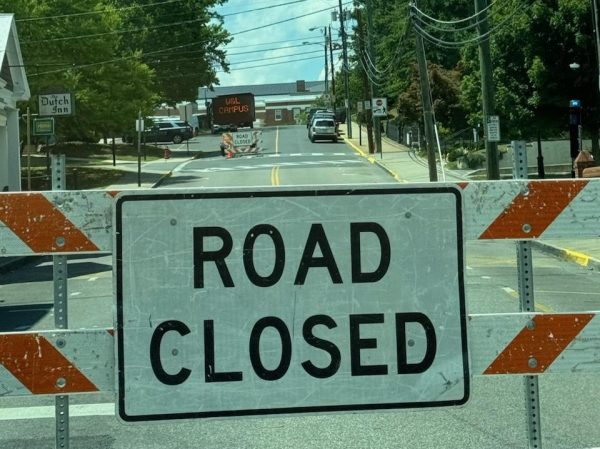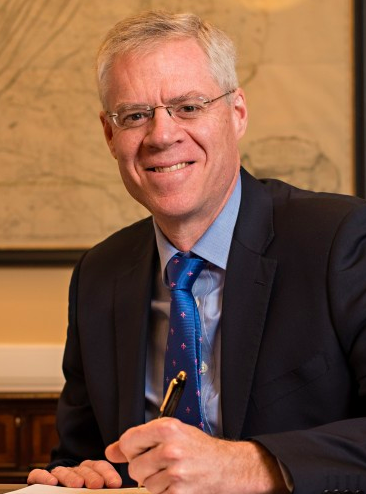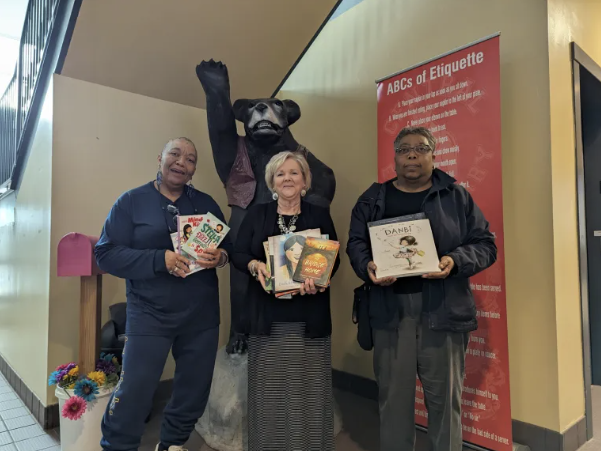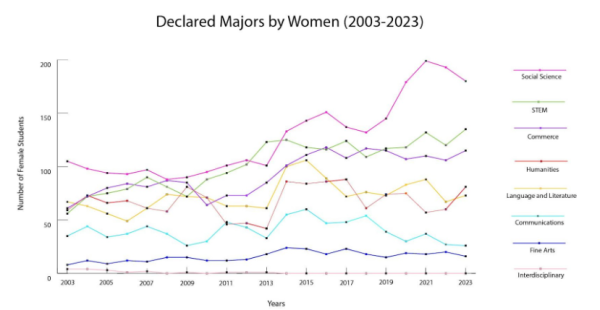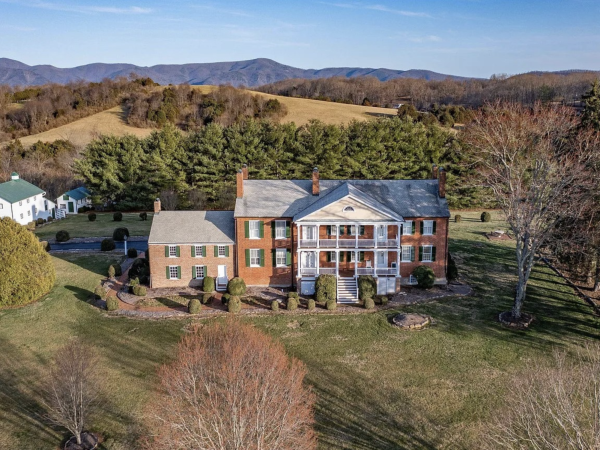DeLaney Center researches untold stories of Black women on W&L’s campus
Black women’s contributions to the school included creating and leading dynamic student organizations
Tamara Futrell (right), dean for diversity, inclusion and student engagement, poses with two other members of historically Black sororities in 2006. The DeLaney Center is working to tell the often-neglected history of Black women on Washington and Lee’s campus. Photo courtesy of Futrell
April 11, 2023
In 1987, the Student Activities Board of Washington and Lee University announced their 80th annual Fancy Dress Ball theme. “Slap on Your Banana Republic cumberbund and get ready for the African jungle experience of ‘The Dark Continent,’” read the first paragraph of a Ring-Tum Phi article.
The following year, the theme was “The Reconciliation Ball of 1865,” a Civil War-themed ball with decorations of the “Southern Countryside” and “Northern City.” The Fancy Dress shirts showed George Washington beside an American Flag and Robert E. Lee beside a Confederate Flag.
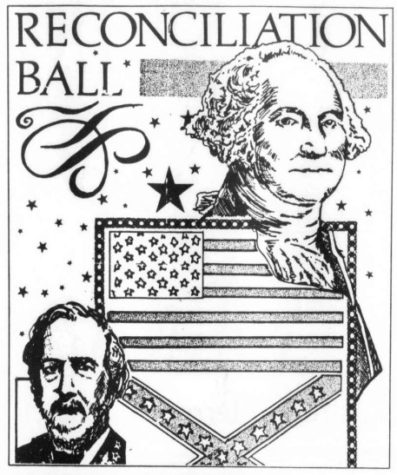
Rosalyn Thompson, a Black woman and former president of the Minority Student Association, wrote a letter to the editors of the Ring-Tum Phi saying MSA would be boycotting the 1988 Fancy Dress Reconciliation Ball.
“Do the members of SAB actually think that the Black students at this university can enjoy Fancy Dress when its theme is to be set in a period in which Blacks were oppressed?” Thompson wrote.
Spotlighting Black women’s experiences
This is just one of the many untold stories of Black women on Washington and Lee’s campus that the Black Women and Desegregation Project is working to capture.
The project, which began at the beginning of the winter semester, is headed by the DeLaney Center and guided by the Leyburn Library and the office of Institutional History. It is centered on capturing the experiences of Black women who went to Washington and Lee from 1985 to 2015 through archival research and oral histories.
The DeLaney Center aims to clarify the connection between Southern identity, racial reality and American democracy, said professor Michael Hill, the director of the DeLaney Center. The history of Black women at Washington and Lee is a piece of that, he said.
“Certain student projects focused on the coeducation experience have begun,” Hill said. “A gap in some of those efforts has been the simultaneous experience of being Black and a woman at the same time on this campus.”
Rose Hein, DeLaney Center postbaccalaureate fellow, will be guiding five student researchers––Tiwaniya Tyler, ’24, Amber Morrison, ’23, Marlee Davis, ’25, Niani Benjamin, ’24, and Madison Karlin, ’25––in conducting a series of interviews by the beginning of May.
The project began in late January, and since then, students have been learning how to properly conduct and preserve an oral history, in preparation for these interviews.
The project is preceded by the Student Association for Black Unity’s Early Founders Project, an oral history in which two seniors, Morrison and Lauren Hayes, interviewed the all-male founders of SABU about the organization’s genesis in 1971.
Now, these five students will begin a similar process, gathering detailed stories of Black women who went to school in the early days of coeducation.
Black women alumni share accomplishments, challenges
One of the many challenges has been figuring out who is willing to be interviewed, not only because of the confidentiality rules set in place for contacting alumni but also because of the complicated history Black women have with Washington and Lee.
Tamara Futrell, dean of the Office of Inclusion and Engagement, has been a key figure in overcoming this obstacle, as she has worked at Washington and Lee for 20 years and has built connections with Black female alumni that can be used for this project.
Hein said she hopes the project will help with building better connections with Black women alumni. For programming like Black FLEX and Black Ball, Tyler and Benjamin said that the alumni who attend are overwhelmingly Black men.
“Some people, upon leaving W&L, opt in to being contacted or to not be contacted, and I feel like that really depends on their experience here,” Benjamin said.
Many Black women have a specific, potentially negative experience at the university, so researchers may more often run into people who decline to be interviewed, she said.
Dominique Lamb, ’08, a Black woman, said she hopes the project will be a way to highlight not only the struggles but also the significant contributions Black women have made to the university.
“Washington and Lee is just a microcosm of our larger society in terms of Black women making a huge impact but not being recognized for that impact,” Lamb said.
Lamb said some contributions of Black women to the school would be hard to see from archival records.
Actions like the chartering of Delta Sigma Theta and Alpha Kappa Alpha are tangible and easy to reference in documents even now. But the leadership roles many Black women held in Joyful Noise, a gospel choir many Black students participated in, and other events such as fashion shows and radio shows are harder to find.
Lamb said she faced many challenges, despite the accomplishments of Black women on campus and the family and community she built for herself.
One of her early memories at Washington and Lee was a university alum writing a letter to one of the university’s publications complaining about the school’s growing diversity and the efforts being made to bring minority students to campus.
She said this made many Black students feel unwelcome but also pushed them to “double-down” on their efforts. Their cohort decided to be more active when it came to hosting prospective students and other programming and initiatives.
Kaela Bailey, ’05, said one of her closest friends during her time at the university struggled so much with the racial climate that he left after winter break and never returned.
Bailey said she contemplated transferring but refused to allow the experience to beat her. Instead, she built community through joining groups like the MSA and her sorority, Delta Sigma Theta.
A fuller picture of W&L history
Ronda Bryant, associate dean of students, said she hopes the project allows prospective students to feel more welcomed and get a clearer picture of what Washington and Lee is like.
Bryant said many students have come to her experiencing culture shock.
“Being transparent and being clear about where you’re going to be attending is very important,” she said.
Chawne Kimber, dean of the college, said she appreciates Washington and Lee’s willingness to analyze its past directly. The project gives opportunity to honor the Black women in the school’s history who did great work in the community but have yet to be recognized.
“I do think that we have structural issues, systemic issues, to work on,” Kimber said. “And studies like this provide the evidence of these structural issues and guide you toward your to-do list.”
This round of interviews will hopefully be the first of many, said Jessica Wager, assistant director of Institutional History.
The student researchers will present the findings of their work in early May. The project will also live in special collections in various forms, depending on the preferences of the interviewees.
“There’s some magic we can make happen here,” Bryant said. “Even as students of color and even as women of color, we can come here and do some amazing things.”
—
Disclosure: Caitlyn Thompkins is a member of Alpha Kappa Alpha Sorority Inc.




